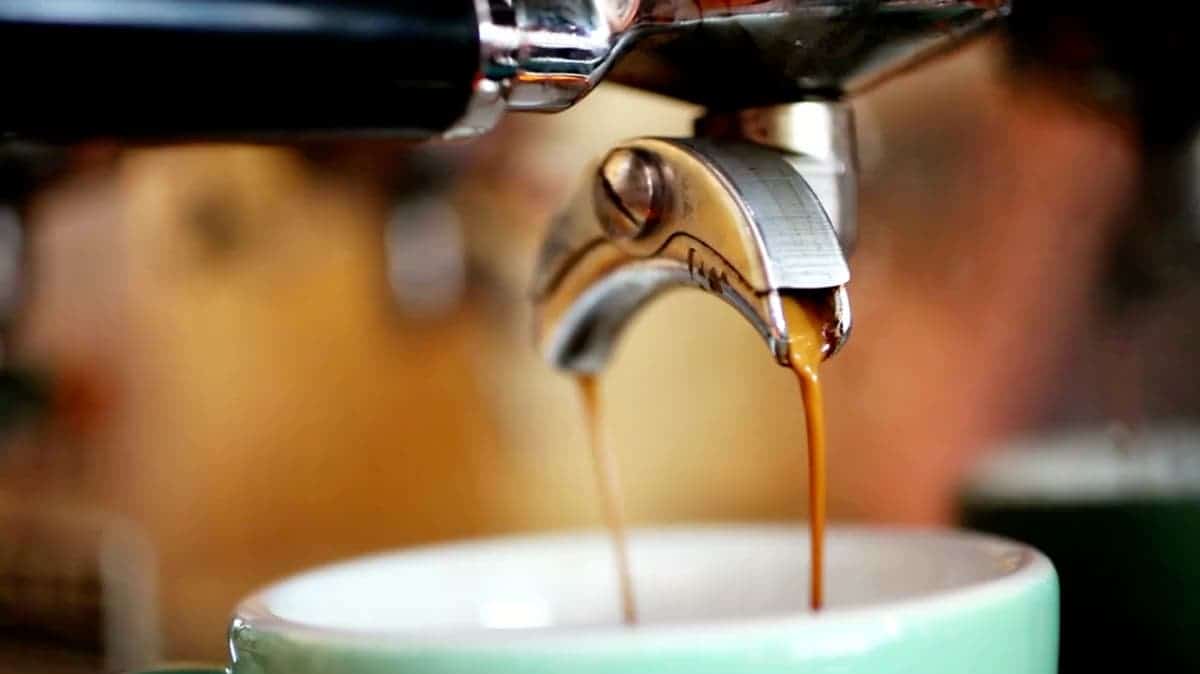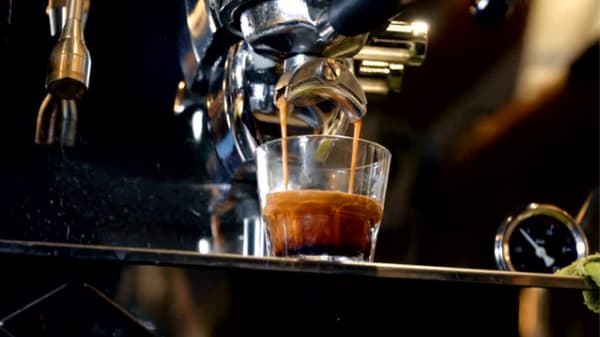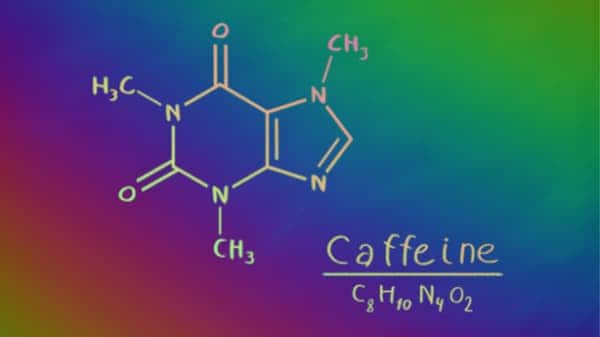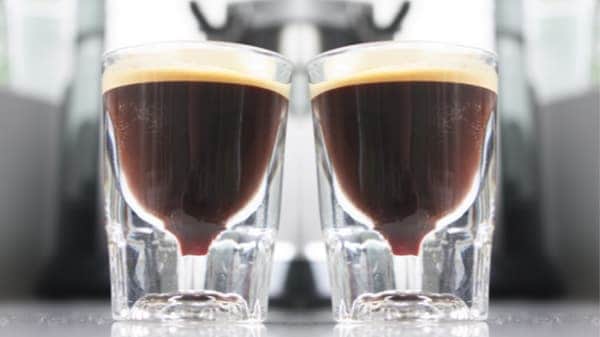What Is Espresso & How Do You Make It?
As a former barista, I can tell you what separates a well-trained barista from a poorly-trained one is the ability to make espresso well.
It’s the bedrock of many coffee drinks, and a great espresso shot is pretty perfect on its own.
Espresso is a rich and rewarding coffee drink. It also forms the basis for many coffee drinks – like lattes, cappuccinos, and even blended coffees.
For coffee lovers, espresso is not only a tasty pick-me-up. It’s also a great way to train your palette and understand coffee on a deeper level.

What Is Espresso?
Espresso is concentrated coffee brewed at a high temperature and pressure.
The high pressure pushes hot water through finely packed coffee grounds to create a fast but intense brew, usually 1-2 ounces in size. The brewed coffee is famous for its crema, the thin layer of light brown foam on top.
Traditionally, espresso coffee is made using a high-powered commercial espresso machine. Although, powerful home models are available.
High pressure (averaging about 9-10 bars) and temperature are both required to create this concentrated cup. So many cheap home “espresso” options, like a moka pot, are not considered authentic espresso.
“Shots” of this concentrated coffee can be enjoyed black (with no additions), with a small amount of cream/milk or sugar, or as part of another beverage, like a latte.
Related Reads: Italian Coffee Makers, Italian Coffee Brands, Coffee VS Espresso
What is in an espresso?
If you order an espresso, you’ll receive 1-2 shots of this concentrated coffee.
Many appreciate espresso as a small boost of caffeine with a rich flavor. Well-made espresso is smooth and neither too bitter nor acidic. Note – the type of coffee used will alter the flavor notes.
Single or double?
Traditionally, espresso is extracted as a “double shot” or doppio. In many coffee shops, a double shot of espresso is the basis for common drinks like lattes, cappuccinos or mochas.
A doppio is approximately 2 ounces of undiluted espresso. An espresso solo, or single espresso shot, is half that.
Espresso VS Ristretto?
The main difference between espresso and ristretto is the amount of water used.
Ristretto is basically a short espresso. It is also a high-concentrated coffee brewed at the same high temperatures and pressures as espresso but with less water – around half to three-quarters of the amount used for espresso.
Most find that ristretto shots are sweeter than regular espresso. Many find it to be more intense or stronger. It is often more concentrated since it uses less water but the same amount of coffee.
Ristretto is naturally smaller than espresso. The size depends on the amount of water used, ranging from about 0.5 to 0.75 oz per single shot.
Ristretto is typically served as a double, with two shots (1-1.5 oz) at a time, because it produces less liquid than traditional espresso.
Related Reads: Ristretto vs Long Shot, Espresso VS Latte
The Espresso Machine Matters
If you want to make authentic espresso at home, you will need the right machine. Unlike other coffee drinks, you can make at home like a French press, true espresso requires special, often pricey, equipment.
Some features are key to ensuring your espresso maker is up to the task of brewing quality espresso.
Pressure
If there is a single factor to consider above all others in matters of coffee, it’s pressure. Pressure will affect the flavor and acidity of the espresso shot.
When purchasing an espresso machine, be sure it can create enough pressure. Although many espresso machines are labeled “espresso” makers, many cannot reach the pressure needed to brew an actual cup of espresso.
To make espresso, 7-15 bars of pressure is required, with an average of 9-10 used.
PiD
Sophisticated espresso machines often have a pressure integral derivative (PID). This feature allows the machine to measure water temperature and adjust it to an ideal point.
Steaming
The ability to steam milk is not necessary when brewing espresso. But it’s an ideal feature of an espresso machine.
With steamed milk, you can make espresso-based drinks like lattes, cappuccinos, mochas, and macchiatos (that’s a classic macchiato, not the caramel Starbucks drink!).
Output (shot frequency)
Output refers to how much brewed espresso you get when pulling shots. One shot of espresso should equate to about 1 liquid ounce.
Home espresso machines, however, can vary in output. To make cafe-like espresso, look for an output close to 1 oz.
Still, don’t be afraid to give larger outputs a shot. You may enjoy a little extra coffee. Strength will likely decrease a little with output size, but as long as you enjoy it, a 3-4 oz doppio may be just what you need in the morning.
Reviews
Espresso machines vary in price from about $50 to $2000 or more.
Likewise, their abilities to brew enjoyable espresso differ widely. Always read an in-depth review to make sure a model has the features you require.
Related Read: Best Espresso Machines
Moka pot, French press, or aeropress espresso?
While you can make great coffee with these tools, you cannot make espresso in a moka pot, French press, or aeropress. These methods aren’t capable of the pressure required to make espresso.
Brewing coffee with a moka pot gives you the most similar, espresso-like coffee drink. Moka pots are fairly cheap and still require finely ground coffee, but are easier to use.
You cannot make authentic espresso with a moka pot, but if you love drinking espresso, it’s a worthwhile, cheaper alternative to an espresso maker.

How To Order Espresso At Starbucks?
Rather than ordering a small, medium, or large drink, espresso is ordered by number of shots.
Most order a solo/single shot or doppio/double shot, but you can order a triple (3 shots) or quad (4 shots) as well.
If you don’t specify otherwise, simply ordering “an espresso” will get you 1-2 shots (each business has its own default amount).
This will be served black, without any sugar or cream. Nonetheless, you can add in your own or request it along with a spot of honey, cinnamon or non-dairy milk if you like.
Roasts
Some shops like Starbucks offer many roasts to choose from, allowing you to customize your brew with the espresso beans you ask for.
At Starbucks, you can usually request dark, blonde, or decaf espresso.
There is a whole science to how you roast coffee beans and how it affects flavor, but for customers, just know the three basic types: light, medium, and dark.
Light coffee has the lightest flavor. It tends to be more acidic and has the highest caffeine content. This category includes blonde roasts, which are super-light coffee beans.
Dark roasted coffee has a stronger, heavier flavor and tends to be bitter rather than acidic. It is typically the least caffeinated. Most decaffeinated coffees are dark roasts.
A medium roast coffee falls in between and can lean toward the light or dark end of the spectrum. Medium and darker roasts are popular choices for espresso.
Try different espresso beans to find your favorite. Note: Where the beans were grown and cultivated affects the flavor, so pay attention to region when purchasing your own espresso beans.
Caffeine content
Since espresso is so concentrated, it’s basically an 1-2 ounce energy drink. This can be a welcome morning boost or a heart-racing mistake. To enjoy espresso without overdoing it, don’t forget about decaf.
You can order decaf or “half-caf” (partially caffeinated) to cut down on the (usually) high caffeine content in espresso.
Note: Some refer to half-caf as a “split shot,” as the amount of ground coffee used is “split” between decaffeinated and regular grounds.

What You Need To Make Espresso At Home
To make espresso at home, you will need the following:
– Your regular coffee beans
– A coffee grinder to ensure beans are very finely ground (“espresso” is its own category of finely ground coffee beans with an almost powdery texture) if you do not buy pre-ground coffee beans
– An espresso machine capable of brewing at high pressures (at least 7 bars)
– An espresso cup – smaller than a regular cup, but large enough to contain the number of shots you will brew (an espresso shot is approx. 1 oz)
– Related materials – such as a portafilter (it holds the coffee grounds; espresso shots are brewed through it) and a tamper to pack in coffee grounds into the portafilter if not included with your espresso machine.
– Other ingredients to enjoy with your brewed coffee, such as milk, sugar, honey, cinnamon, cocoa, or water
How To Make Espresso At Home
Making espresso is a fast brewing process – faster than other brewing methods – requiring less than a minute of set-up and an average of 15-25 seconds to brew. To make espresso:
1. Grounds Prep
Fill your portafilter with finely ground coffee beans.
The portafilter is a device with a small pocket for the coffee grounds and a long handle that will contain your grounds.
Very hot water will be forced through it at a high temperature, brewing your coffee. Your espresso machine should include a diagram.
2. Level off the grounds
Do this with a butter knife or straight object working in two directions: North-South and East-West. Your coffee grounds should just reach the rim of the portafilter.
3. Tamp, or pack in, the grounds
Your espresso machine may come with an attached tamper or a handheld one. Position your portafilter under the tamper and push up with a fair amount of force.
The top layer of coffee grounds should now lie below the rim of the portafilter.
For a handheld, grasp the handle, form a 90-degree angle with your elbow, and push straight down onto the grounds. Remove pressure, but leave the tamper resting on the grounds and give it a slight spin.
4. Place the portafilter in the grouphead
Practice this a few times with an empty portafilter to understand the motion. You will have to insert it with the handle at an angle.
Then rotate it toward you while keeping the portafilter on the same plane.
5. Cup Prep
5Position shot glasses or espresso cup directly under the spouts of the portafilter.
6. Press the appropriate espresso button
Your espresso machine may have one or several brew options. Choose an espresso option in the appropriate size.
7. Brew
Wait for shots to brew. Turn off the brew function if your machine is manual.
8. Drink!
Enjoy your espresso as desired.
Remember, making coffee is an art. Watch how-to videos before you try to achieve the perfect espresso.
Making great espresso requires the same amount of practice as making any other brewed coffee drink.

Troubleshooting Espresso At Home
When you know what you’re doing, espresso is fast and straightforward to make.
Perfecting the process requires perfecting the grind, tamp, and choosing coffee varieties that are most to your taste.
With some machines, you can check that temperature/pressure settings are correct, too.
The grind is especially important. Buy ground coffee from a local coffee shop that is specifically ground to espresso fineness to start. Once you’re familiar with the texture and sight you can try grinding your own.
Be sure you have the right equipment, too, and a variety of coffee you like in the first place.
Otherwise, there are a few things you can do to fix espresso that has gone wrong:
– When your espresso is too sour, it likely pulled too quickly. You can slow it down a little by packing in your grounds more tightly or even by grinding the coffee more finely in the future.
– When your espresso is too bitter, it pulled more slowly. Speed up the process by tamping less (but don’t pull back too much at once!), or using a slightly coarser grind.
– Tweak your process just a little at a time. Small changes can make a big difference.
Salvaging The Cup
If your brewed coffee isn’t exactly a great espresso worthy of an Italian espresso bar, adding ingredients is the best thing to do.
Go-tos are water, milk (dairy or not), and sugar to make related espresso drinks.
Water cuts acidity levels but won’t cover flavor well. Milk and sugar are better at disguising the poor flavor of an unsatisfying espresso shot.
The more you add of these ingredients the less you will notice disappointing coffee. Other ingredients like honey, cocoa, cinnamon also dress up mediocre brews.
Frequently Asked Questions
Is espresso stronger than coffee?
Espresso is more concentrated than “regular” drip coffee, so generally, it is stronger in flavor than plain old coffee.
However, both can be brewed weaker or stronger based on the amount of grounds used (more coffee means a stronger flavor), and the skill of the barista. Flavor is also affected by type of coffee used – darker roasts are considered stronger.
Is there milk in espresso?
An espresso is served plain or black unless you order it otherwise. That said, many choose to add a small splash of cream or milk to their espresso shot(s).
Who invented espresso?
Luigi Bezzera is credited with inventing espresso in 1903.
The Italian businessman wanted a faster cup of coffee, and he figured out that adding steam pressure to his machine would create a quicker, stronger-tasting brew.
The name ‘espresso’, which means fast in Italian, refers to the brewing speed.

